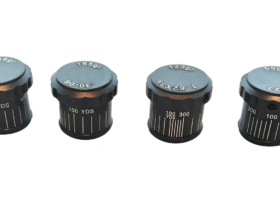Are you an education professional looking to change up your career? Whether you’re a teacher, administrator, or educational consultant, there are a number of other opportunities available. However, it’s important to present yourself in a way that will gain the respect of your colleagues and clients.
There are a variety of alternative jobs for teachers outside of the traditional classroom setting. Some educators choose to become school administrators, working as principals or district superintendents. Others may become curriculum designers, working for publishing companies or educational technology firms. Former teachers also find success as educational consultants helping schools and districts develop educational plans. Still, others may become college professors, teaching future teachers at universities or graduate schools. And finally, many teachers find careers in private tutoring, helping students one-on-one to achieve their academic goals.
Fortunately, there are a few simple ways to make a good first impression and some things you can do to project a more professional image. Keep reading to learn how to present yourself as an education professional.
Arrive on time.
Arriving on time for work, school, or an appointment is a sign of respect for the person or event you are attending. It also reflects your commitment to the organization or individual you are meeting with. Being punctual sends the message that you are reliable and consider others’ time important.
There are a number of ways to make sure you arrive on time, including planning ahead, setting alarms and timers, and traveling light. If possible, try to avoid heavy traffic or long walks to your destination. If something unexpected comes up that causes you to be late, apologize immediately and explain what happened.
Making a good impression by arriving on time is important in any profession, but it is especially crucial when you are first starting out in your career as an education professional. When meeting with colleagues, administrators, parents, or students for the first time, being punctual shows that you take your job seriously and are respectful of their time.
Make eye contact.
Making eye contact is an important part of communication, and it’s especially important when you’re meeting someone for the first time or trying to make a good impression. It shows that you’re interested in what the other person is saying and that you’re engaged in the conversation.
When you’re speaking to someone, try to maintain eye contact about 60 percent of the time. This will make you seem interested and engaged, and it will also help the other person feel like they’re being heard. If you find yourself getting distracted or losing focus, just take a quick break from eye contact until you can refocus.
Know your audience.
When preparing to present oneself as an education professional, it is important to first understand the audience. The audience may be composed of educators, parents, or students. Each group will have different needs and expectations. It is important to tailor one’s presentation accordingly.
For educators, one might focus on sharing best practices or discussing new research findings. For parents, one might highlight the benefits of a particular program or discuss how well their child is doing in school. For students, it might be helpful to share tips on how to succeed in school or discuss what they can expect from college.
No matter the audience, it is important to come across as knowledgeable and credible. One way to do this is by being well-prepared. know the topic inside and out and have relevant examples ready to share. Dress professionally and be courteous when answering questions. In short, presenting oneself as an education professional requires understanding your audience and tailoring the presentation accordingly.
Be animated and interactive.
When presenting oneself as an education professional, it is important to be animated and interactive. This means being engaged with the audience, making eye contact, using facial expressions, and speaking with enthusiasm. It also means being able to keep the audience’s attention by being lively and interesting. One way to do this is to use stories and examples to illustrate points. Another way is to ask questions of the audience and engage them in a discussion.
No matter what level of education you work in, it is important to always act and dress professionally. In order to make a good first impression, it is important to be well-spoken and use proper grammar. When meeting with parents or potential students, always be positive and enthusiastic. Ultimately, how you present yourself as an education professional can make or break your career.












